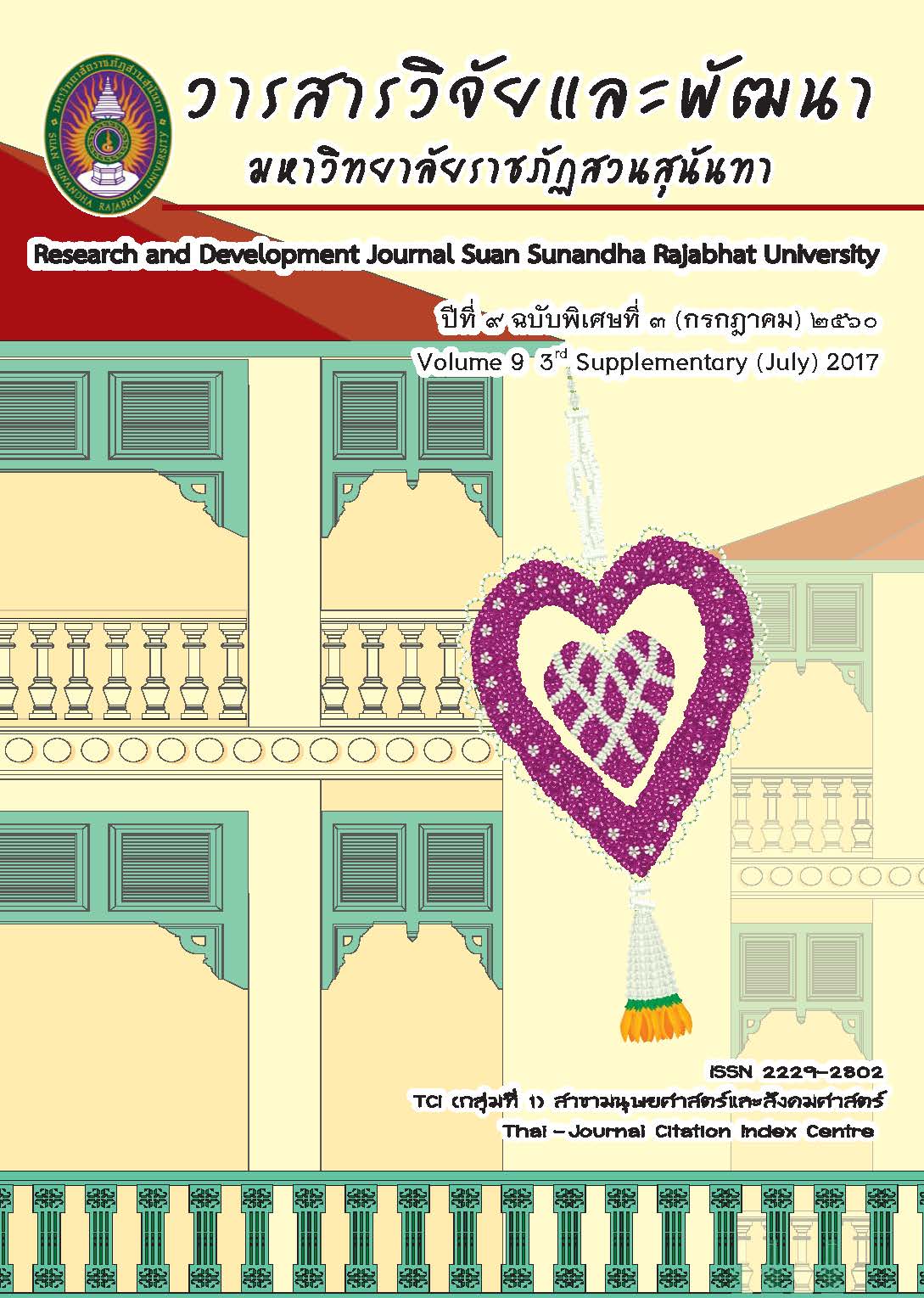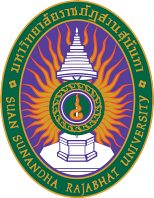A Study and Toy Design for Children to Develop Basic Chinese Skills
DOI:
https://doi.org/10.53848/irdssru.v9i3%20SUP.214322Keywords:
toys, development, Chinese language, primary, design.Abstract
This research had objectives as follows: 1to study the characteristics of
children playing with toys; 2)to design basic Chinese skill development toys with
numbers for kindergarten students; 3) to make assessments of the basic Chinese skill
development toys for kindergarten students; and 4) to make assessments of
comparison for the learning results before and after studying.
The research applied the method of using the population, which were the
kindergarten students, who studied basic Chinese skill development totaling 33 people
at the Chinese Institute in Bangkok. Group sampling was conducted with the
kindergarten students who studied the basic Chinese skill development subject at the
OKLS Chinese School in Bangkok totaling 30 people. Purposive Sampling was applied
by using the pre-test and post-test learning assessment for the kindergarten students
who have studied the above subject. Analysis was conducted of the averages, the
Standard Deviation and the t-test dependent in this research.
According to the result, the content was very good ( X = 4.08, S.D. = 0.42) and
the teaching style was very good ( X = 4.70, S.D. = 0.46). It was found that the test
during studying, called E1, was in the average range with a 24.40 score and 81.33
percentage, and the test result, called E2, was in the average range with a 25.13 score
and 83.78 percentage. Furthermore, it was found that the effectiveness of the basic
Chinese skill development toys with numbers and learning the alphabet, called E1:E2,
was equal to 81.33:83.78. Thus, the scores have passed the standard. As a result, it
could be concluded that learning result of the basic Chinese skill from using the basic
Chinese skill development toys with new developed numbers and alphabets was at a
higher level in the post-test than pre-test studying with a significance of .05.
References
education for children with
special needs. Bangkok: Wankaew
printing limited partnership.
Chaichanavijit, A. (2014). Inside the box.
Bangkok : WeLearn Co., Ltd.
Egwutvongsa, S. (2016). Thinking for
develop industrial products.
Bangkok : Min service supply press
printing.
Juito, S. (2011). Innovation Management.
Bangkok : The Office of the
University Press, Sukhothaithammathirat.
Leekitwattana, P. (2015). Research
methodology in education.
Bangkok: Min service supply press
printing.
Mei, N. (2011). Mind Map Chinese.
Bangkok: Proud book shop Co., Ltd.
NopKet, R. (1993). General
Psychology. Bangkok: Color slide
club bangkok : Amarinprinting and
publishing public company limited.
Peter, S.(2006). Graphic Design. Bangkok :
Odeon Store.
Pinkoon, D. (2015). Creative marketing
for new marketing. Bangkok :
Amarin printing and publishing
public company limited.
Prasertsan, S. (2005). Imitation learning.
Bangkok : Amarinprinting and
publishing public company limited.
Sujeera, S. (2016). Create a Shortcut for
intelligent. Bangkok :
Amarinprinting and publishing
public company limited.
Suksod, T. (2001). Industrial Design.
Edition First Printing. Bangkok :
Odeon Store.
Tangcharoen, W. (1996). design. Bangkok :
Odeon Store.
Thaothong, S.(2016). Art academic
research to create a practical art.
Bangkok : Charansanitwong printing
Co.,Ltd.
Thirajit, V. (2004). Education for Children
with special needs. Bangkok :
Chulalongkorn University Press.
Vongsingthong, P. (2007). Research
Methodology in Product Design.
Bangkok : Chulalongkorn University
Press.
Downloads
Published
How to Cite
Issue
Section
License
บทความที่ได้รับการตีพิมพ์เป็นลิขสิทธิ์ของ สถาบันวิจัยและพัฒนา มหาวิทยาลัยราชภัฎสวนสุนันทา
ข้อความที่ปรากฏในบทความแต่ละเรื่องในวารสารวิชาการเล่มนี้เป็นความคิดเห็นส่วนตัวของผู้เขียนแต่ละท่านไม่เกี่ยวข้องกับมหาวิทยาลัยราชภัฎสวนสุนันทา และคณาจารย์ท่านอื่นๆในมหาวิทยาลัยฯ แต่อย่างใด ความรับผิดชอบองค์ประกอบทั้งหมดของบทความแต่ละเรื่องเป็นของผู้เขียนแต่ละท่าน หากมีความผิดพลาดใดๆ ผู้เขียนแต่ละท่านจะรับผิดชอบบทความของตนเองแต่ผู้เดียว






